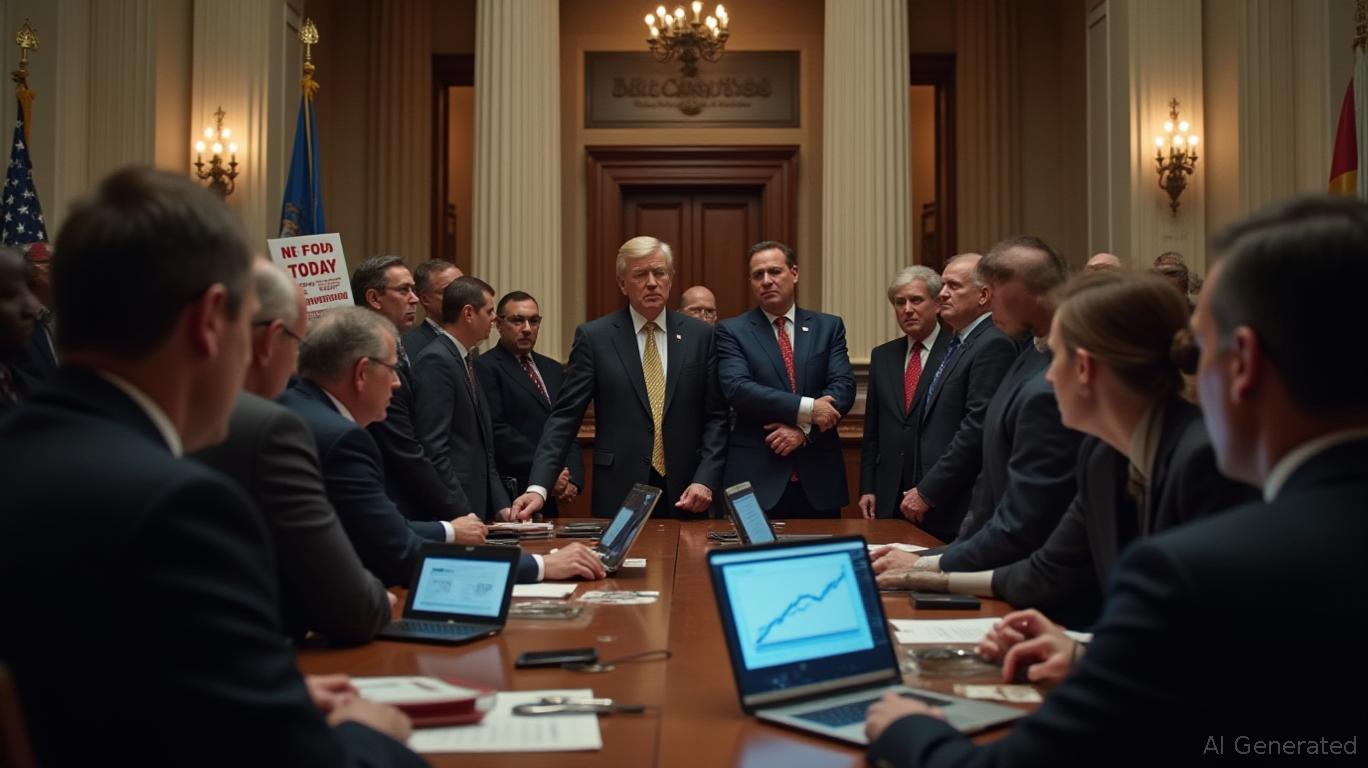Verification, rather than speculation, is what fuels value in the Web3 vision of ZKP
- ZKP blockchain project combines AI and decentralized infrastructure, using dual consensus (PoI/PoSp) to prioritize verification over speculation. - Its whitelist prioritizes verifiers over token holders, fostering meritocracy through computational/storage contributions and zero-knowledge proofs. - Privacy-preserving computation enables encrypted data processing, aligning with regulatory demands while maintaining data sovereignty and intellectual property control. - The platform challenges centralized AI
Zero Knowledge Proof (ZKP), a blockchain initiative merging artificial intelligence with decentralized infrastructure, is attracting considerable attention as it prepares for its whitelist debut. The project stands out by emphasizing verification rather than speculation, making verifiers the cornerstone of trust in a system crafted to harmonize privacy, scalability, and data ownership. With excitement mounting, both analysts and crypto supporters are pointing to ZKP's unique dual consensus system, privacy-first design, and the merit-based structure of its whitelist as major factors distinguishing it in the rapidly changing blockchain sector, according to
ZKP's architecture is anchored by a dual consensus approach that integrates PoI and PoSp. PoI encourages nodes to handle AI computations by rewarding their processing efforts, ensuring efficient task execution without compromising sensitive information. In contrast, PoSp authenticates storage pledges, supporting decentralized data access while upholding cryptographic security. This combined strategy enables ZKP to distribute AI computing power worldwide, tackling scalability issues and maintaining privacy through zero-knowledge technologies such as zk-SNARKs and zk-STARKs, as outlined by

ZKP distinguishes itself from conventional blockchain platforms by focusing on computation that safeguards privacy. The system allows encrypted data to be processed without exposing the underlying data or algorithms, a vital capability for sectors dealing with confidential information. This methodology meets increasing regulatory expectations for ethical data use and sovereignty, empowering developers and organizations to work together securely while maintaining control over their intellectual assets, as mentioned by Live
The whitelist marks a significant milestone for ZKP, acting as both a gateway and a measure of participants' dedication to verification. Unlike typical token offerings, ZKP's whitelist favors those ready to assess and scrutinize claims within the network, laying a groundwork of trust before any tokens are allocated. Early adopters are more than just investors—they are curators responsible for upholding the blockchain's credibility, ensuring that only reliable, validated information is shared, as discussed by
Both supporters and skeptics recognize ZKP's capacity to challenge centralized AI frameworks. By distributing computational and storage resources, the project tackles issues of scalability and data protection, presenting a robust alternative to established systems, as noted by Timestabloid. Nevertheless, proving the scalability of its dual consensus mechanism and fostering widespread adoption of its verification principles remain ongoing challenges. As the whitelist opens, observers will watch closely to see how ZKP brings its ambitious goals to life within a decentralized, trustless environment.
Currently, ZKP serves as an intriguing example of how blockchain is shaping the future of AI. Its dedication to verifiable accuracy, privacy, and decentralized teamwork reflects broader movements toward ethical and transparent digital systems. As the boundaries between blockchain and AI continue to
Disclaimer: The content of this article solely reflects the author's opinion and does not represent the platform in any capacity. This article is not intended to serve as a reference for making investment decisions.
You may also like
Partisan Stalemate Results in $14 Billion Losses and 42 Million Facing Hunger as Shutdown Hits 35 Days
- U.S. government shutdown hits 35 days, matching historical record as partisan gridlock disrupts services for millions. - 42 million Americans face food aid delays under SNAP, with states using emergency funds amid federal funding disputes. - Economy risks $7B-$14B loss as shutdown extends, with GDP growth projected to drop 1-2% depending on duration. - Air traffic delays and unpaid federal workers highlight human costs, while political leaders blame each other for stalemate. - Trump administration oppose

Bitcoin Updates: Ambiguous Fed Rate Direction Triggers Crypto Sell-Off, $1.2 Billion Liquidated
- Crypto markets saw $1.2B in liquidations as Bitcoin and Ethereum dropped 3% amid macroeconomic uncertainty and trader panic. - Top exchanges like Hyperliquid and HTX recorded massive losses, with high-profile traders suffering $15M-$33M in single-day wipeouts. - Fed's ambiguous rate-cut signals and Trump-Xi meeting failed to stabilize prices, while Coinbase's negative premium index highlighted U.S. selling pressure. - Despite 3-month lows for ETH and altcoins, analysts like Nick Ruck suggest Fed policy s

Ethereum News Update: Crucial Support and Resistance Clash for Ethereum: Bulls and Bears Face Off in Intense Showdown
- Ethereum's price hovers near $3,600–$3,750 support, with bulls targeting $4,000+ and bears warning of a $3,300 drop. - Technical indicators show neutral-to-bearish momentum, while on-chain data highlights $165B reserves and stablecoin strength. - A Binance 30,000 ETH order and Fed policy signals could drive volatility, with $4,000+ potentially unlocking $5,000–$6,000. - Key resistance at $4,100–$4,250 remains intact since mid-2025, requiring a breakout to confirm bullish momentum.

BCH Drops 1.9% on November 4 as Weekly and Monthly Declines Worsen
- Bitcoin Cash (BCH) fell 1.9% on Nov 4, with 8.3% weekly and 7.25% monthly losses, contrasting a 14.22% annual gain. - Technical indicators show mixed signals: oversold RSI hints at potential rebounds, but bearish MACD divergence suggests lingering downward momentum. - A backtest seeking 15%+ BCH spikes since 2022 failed due to no historical matches, prompting analysts to propose lower thresholds or alternative triggers like volume surges.